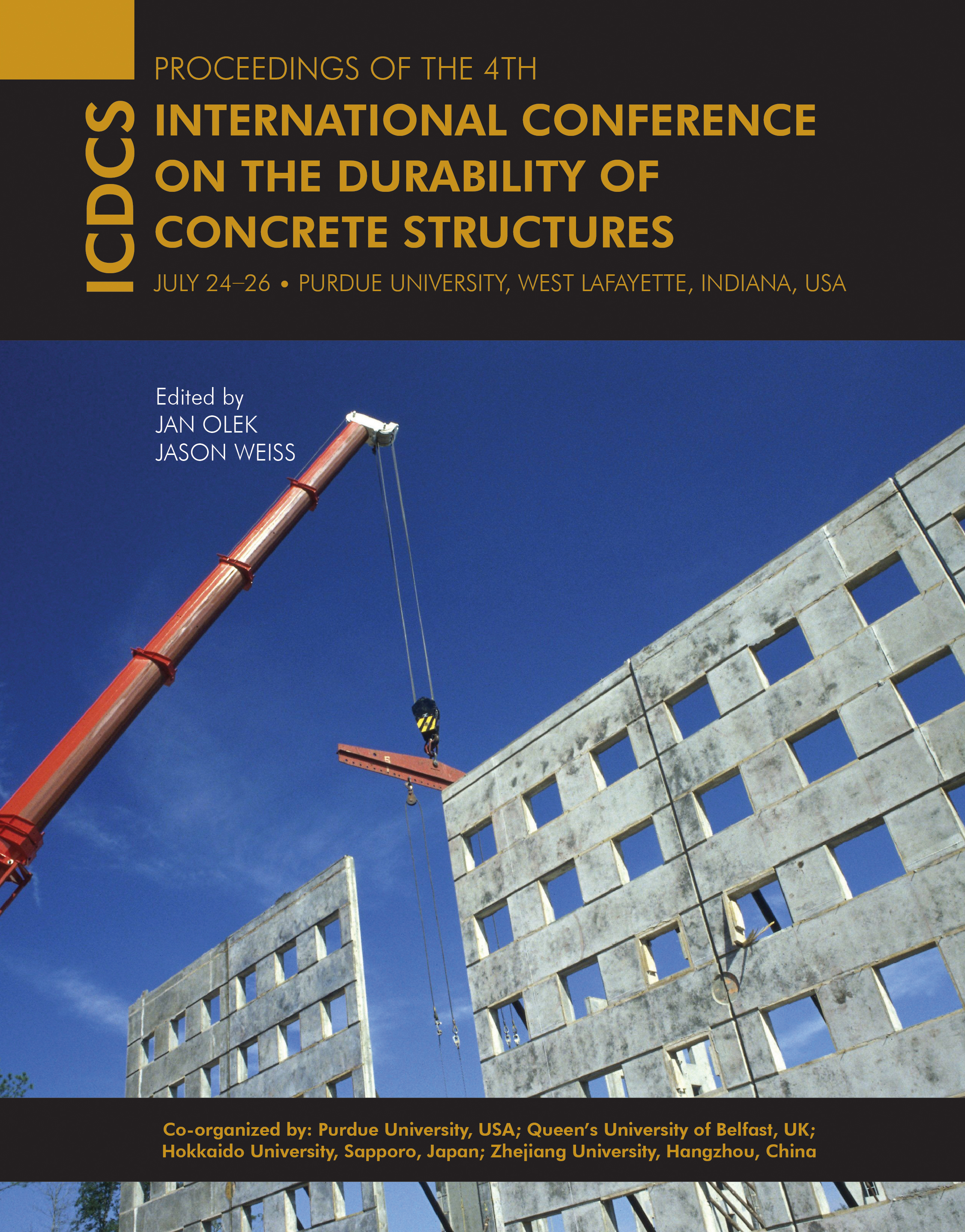Keywords
wollastonite, desorption isotherms, porosity, cementitious materials
Abstract
This paper focuses on examining the pore structure of a cementitious paste made with a calcium silicate (wollastonite) that reacts with carbon dioxide and water to form a hardened solid. The pore structure of the hardened solid has been characterized using vapor sorption and desorption, low-temperature differential scanning calorimetry (LT-DSC), and scanning electron microscopy (SEM). The total porosity was also measured using mass measurement in oven-dry and vacuum-saturated conditions. Evidence exists that support the hypothesis that the solid has two main pore sizes: large macropores (>10 nm) appear to form between the initial calcium silicate particles and small micropores (<10 >nm) were found in the reacted silica gel. The bimodal nature of the pore structure was evident from the desorption and LT-DSC responses. The extent of reaction was also investigated and was found to be the result of the function of the raw material particle size: only particles with radius <10 >μm were found to have entirely reacted even in highly reacted systems. Moreover, the degree of reaction influenced the uniformity of reaction across the sample. Only the highly reacted system showed a uniform microstructure with continuous reaction products path and low porosity.
DOI
10.5703/1288284315410
Characterizing the Pore Structure of Carbonated Natural Wollastonite
This paper focuses on examining the pore structure of a cementitious paste made with a calcium silicate (wollastonite) that reacts with carbon dioxide and water to form a hardened solid. The pore structure of the hardened solid has been characterized using vapor sorption and desorption, low-temperature differential scanning calorimetry (LT-DSC), and scanning electron microscopy (SEM). The total porosity was also measured using mass measurement in oven-dry and vacuum-saturated conditions. Evidence exists that support the hypothesis that the solid has two main pore sizes: large macropores (>10 nm) appear to form between the initial calcium silicate particles and small micropores (<10>nm) were found in the reacted silica gel. The bimodal nature of the pore structure was evident from the desorption and LT-DSC responses. The extent of reaction was also investigated and was found to be the result of the function of the raw material particle size: only particles with radius <10>μm were found to have entirely reacted even in highly reacted systems. Moreover, the degree of reaction influenced the uniformity of reaction across the sample. Only the highly reacted system showed a uniform microstructure with continuous reaction products path and low porosity.





